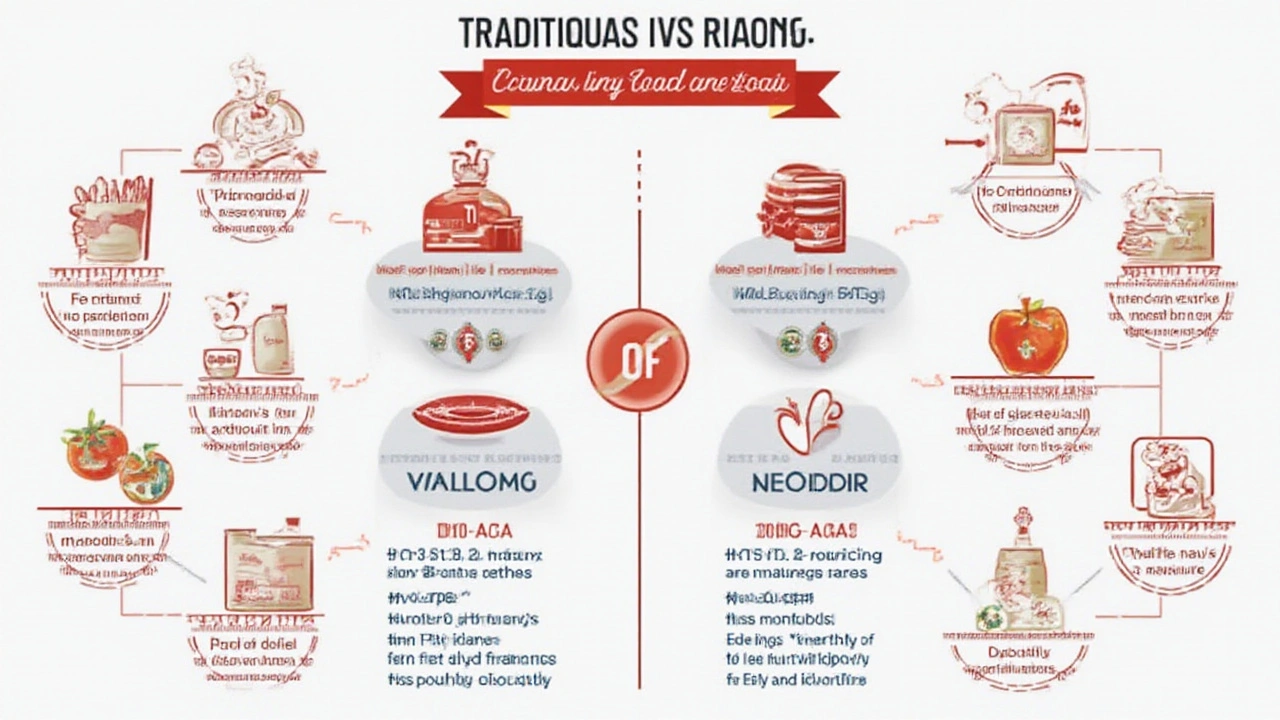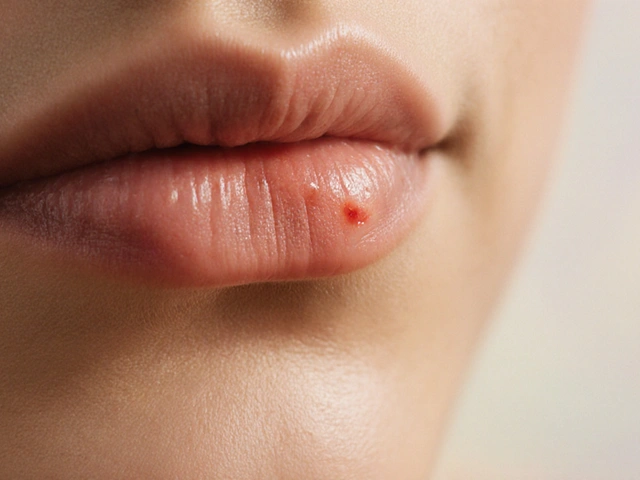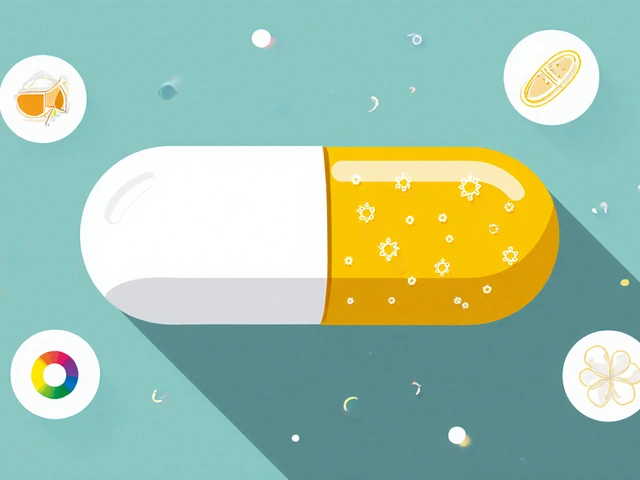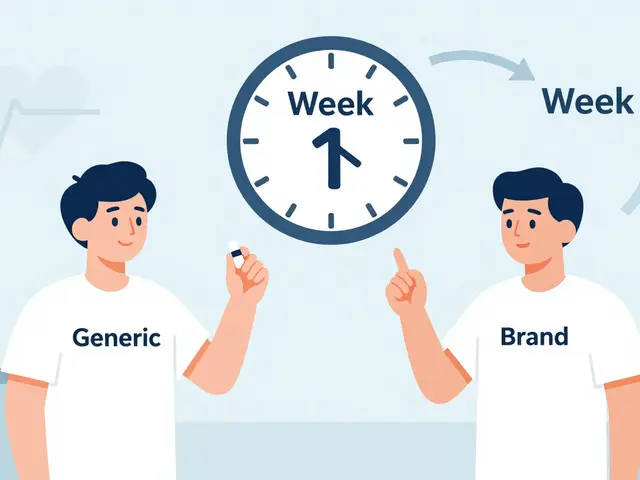Blood thinners usually aren’t at the top of anyone’s wish list. If you or someone close has ever taken Coumadin (warfarin), you probably know the routine—an endless tornado of blood tests, food restrictions, and that lurking fear of one missed dose. News flash: you don’t have to stick with Coumadin forever. Today, whole new classes of blood thinners are rewriting the rules—especially for those who’re ready to ditch the hassle and step into something safer, smoother, and frankly, much less annoying. The secret weapon? These newer drugs called DOACs. Plus, a few smart tweaks to your diet and lifestyle can lower risks in powerful ways most people never hear about.
Why People are Stepping Away from Coumadin
Here’s the truth about Coumadin. It works, and has been saving lives since the 1950s by preventing clots that cause strokes, heart attacks, and deep vein thrombosis. But Coumadin isn’t exactly user-friendly. The list of foods you can and can’t eat could fill an encyclopedia—leafy greens, green tea, even cranberry juice mess with your dose. One slice of spinach quiche, and suddenly your blood tests are out of whack. And those blood tests? Once every week or two, sometimes even more. Forget about spontaneity—life with Coumadin can feel like you’re always counting carbs, calories, or something else.
The biggest headache comes down to instability. Vitamin K in food directly battles with Coumadin in your body. That means if you eat a salad for lunch and a burger for dinner, your blood could swing from thin to thick overnight. Even the best doctors find it tough to get your levels perfectly balanced. That’s why lots of patients ask about a substitute for Coumadin. They want something easier, less finicky, but still reliable enough to keep their blood safe from clots.
The good news: that’s now possible. Direct Oral Anticoagulants (DOACs) entered the scene with a bang—rivaroxaban (Xarelto) and apixaban (Eliquis) are topping bestseller lists for blood thinners. They’re just as effective but with a smooth, predictable effect on your blood. No more endless food rules. Most people never need regular blood checks, either. That means you actually get your life back.

Meet the Stars: Rivaroxaban and Apixaban
If your doctor’s brought up the idea of switching, odds are good they mentioned apixaban or rivaroxaban. These two DOACs are now prescribed for everything from atrial fibrillation to post-surgery clot prevention. Both work by blocking specific proteins in your blood (Factor Xa, if you’re curious), which stops clots before they can even form. But how do they stack up against each other, and which might fit you better?
A peek at the numbers: apixaban and rivaroxaban both cut your risk of stroke as reliably as warfarin—actually, apixaban was shown in the ARISTOTLE trial to outperform warfarin for both safety and less bleeding risk. In one study with over 18,000 people, apixaban had about 30% less risk of major bleeding than warfarin. Rivaroxaban—largely thanks to the ROCKET AF study—holds a similar safety record, though it did slightly up the chance of GI bleeding in some folks. That said, with either of these, you skip the vitamin K circus and almost never need dose tweaks or frequent testing.
The biggest differences? Apixaban is taken twice a day, rivaroxaban just once. That once-a-day option can sell itself to people who hate taking meds. Both drugs play nice with most foods, but you do need to eat with rivaroxaban or it won’t work as well. Grapefruit and St. John’s Wort can still mess things up, so keep those on your radar.
Practical tip: If you’re tired of walking on eggshells with your warfarin, ask your doctor whether one of these is safe for your specific heart, liver, and kidney situation. Not all insurance covers every brand, so it pays to check in advance. Still, most folks feel the tradeoffs are worth it—the freedom to eat salad whenever you want is a game-changer.
Here’s how these options stack up at a glance:
| Drug | Dosing | Food Restrictions | Frequent Blood Tests? | Bleeding Risk* |
|---|---|---|---|---|
| Warfarin (Coumadin) | Once daily | YES - many foods interfere | YES - frequent INR needed | Moderate |
| Apixaban | Twice daily | Minimal | No routine tests | Low |
| Rivaroxaban | Once daily (with food) | Minimal | No routine tests | Similar/Low |
*Serious bleeding risk lower for apixaban, similar for rivaroxaban compared to Coumadin.
It gets even more interesting: DOACs clear from your system faster than Coumadin—so if you need surgery or have a bleeding problem, they’re easier to stop and restart. Less fear, less waiting, less hospital time.

Smart Lifestyle Tweaks: Diet, Habits, and Preventing Clots
Doctors don’t always shout about it, but little changes can turn the odds in your favor—even if you still need medication. Since you asked about substitutes, it’s worth thinking big—maybe rethink not just your pill bottle, but your whole routine. Blood clots love to strike when you’re least expecting, like a long-haul flight or after surgery. But you’re not powerless. Here’s some stuff most patients miss—
- Move more often. Sitting for hours lets blood pool in your legs. Something as simple as a stroll each hour, ankle circles, or a standing desk can slash blood clot risks.
- Watch your weight. Even losing 5-10% of body weight drops your chances of clot trouble in a real, measurable way. Belly fat in particular releases stuff that thickens blood.
- Hydrate intentionally. Thick, sticky blood is a clot’s best friend, and dehydration makes it worse. Drink water before long drives, flights, or hours stuck at a desk.
- Know your family history. If Grandma had a clot, your odds go up. Mention this with your doctor—a different drug or closer watch might be smart.
- Quit smoking. You knew this already, but honestly, it takes your clot odds through the roof. Tobacco, vaping, all of it—just walk away.
- Ask about sleep apnea. Weird but true: people who snore and gasp at night get way more clots. If you wake tired or your partner complains, mention it. Treating apnea can be a real lifesaver.
Diet still matters, even if not for the reasons warfarin patients fear. Instead of cutting everything green, it’s about balance. Omega-3 fatty acids (in salmon, walnuts, chia seeds) really help blood stay smooth in the pipes. That means less inflammation and lower clot risk. Focus on whole grains, good fats, and lots of natural color. Keep salt in check too—high blood pressure is like rocket fuel for clots.
If you want every detail spelled out, check out this thorough guide on substitute for Coumadin—it breaks down the science, cost, and side effects so you’re not left guessing.
Finally, size up all your non-prescription pills. Some harmless-looking supplements (think ginkgo, garlic, fish oil in mega doses) can thin your blood too much when mixed with any anticoagulant. Use one pharmacy, and tell your doctor about everything, even those health store vitamins. They want to keep you safe, not just free from clots.
Switching blood thinners or making lifestyle moves can feel like changing lanes on a crowded highway—there’s always a risk, but sometimes it gets you where you’re going with a whole lot less stress. Ask smart questions, know your options, and don’t let an old drug call the shots in your life if a better way is staring you in the face. The future of easy, reliable stroke prevention is here—it just might be time for a fresh start.



 Medications
Medications





Shawn Baumgartner
July 30, 2025 AT 13:31Let’s be real-DOACs are just pharmaceutical marketing magic wrapped in a clinical trial. Apixaban? Sure, it’s ‘safer,’ but the long-term renal data is still being buried under corporate PR. And don’t get me started on the lack of reversal agents. If you bleed out at 3 AM, good luck finding a hospital that can reverse it fast. Warfarin’s a pain, but at least you can fix it with vitamin K and a vial of FFP. This ‘freedom’ is just a subscription model disguised as innovation.
Also, who approved this narrative that patients are too lazy to monitor INR? We’ve been doing it for decades. Now they want us to trust a drug with no monitoring and no safety net? Please.
And don’t even mention cost. Apixaban costs $500/month out-of-pocket. Warfarin? $4. This isn’t progress. It’s profit.
They’re selling you a fantasy. You’re not getting your life back-you’re getting a bill you can’t afford and a drug you can’t control.
Cassaundra Pettigrew
July 31, 2025 AT 15:30Oh sweet baby Jesus, another one of these ‘DOACs are the future’ cult posts. Who’s paying you to write this, Pfizer? Or maybe it’s the FDA’s new PR intern? I’ve seen more honest medical advice on a McDonald’s receipt.
Let me guess-you’re one of those people who thinks ‘no blood tests’ means ‘no responsibility.’ Wake up, Karen. Your kidneys are gonna thank you… right before they fail from 10 years of unchecked rivaroxaban. And don’t even get me started on how these drugs are literally designed to keep you dependent. No monitoring = no accountability = more sales.
And lifestyle changes? LOL. You think eating salmon fixes atrial fibrillation? I’ve got a bridge in Brooklyn I’ll sell you cheap. This isn’t medicine-it’s wellness theater for people who think ‘I’m healthy because I do yoga.’
Brian O
August 1, 2025 AT 15:38I switched from warfarin to apixaban last year after 8 years of weekly INR checks. Honestly? Life changed. No more worrying if my kale smoothie spiked my clot risk. No more scheduling blood draws around work. I still eat greens-I just don’t panic about it anymore.
And yeah, the cost is rough, but my insurance covers it. If yours doesn’t, talk to your pharmacist-there are patient assistance programs. And the bleeding risk? Lower. Like, significantly lower. I had a minor cut that bled for 10 minutes-scary, but not dangerous. With warfarin? That would’ve been an ER trip.
Also, the lifestyle stuff? Real. I started walking 30 mins a day after my knee surgery. Lost 12 lbs. My BP dropped. My doctor said my clot risk went down even without meds. It’s not magic-it’s just not ignoring your body anymore.
Don’t let fear of change keep you stuck. Talk to your doc. Ask about options. You deserve to live, not just survive.
Steve Harvey
August 2, 2025 AT 19:05You think this is about medicine? Nah. This is about control. The FDA, Big Pharma, and your doctor-they all want you dependent on pills you can’t monitor. Why? Because if you could monitor your own blood, you’d realize they’ve been lying about warfarin being ‘unmanageable.’
Here’s the truth: they banned home INR monitors in 2017. Why? Because if you could test yourself, you wouldn’t need their $500/month DOACs. You’d be free. And they can’t have that.
Also, ‘no food restrictions’? Bullshit. Rivaroxaban interacts with grapefruit, NSAIDs, and even certain antibiotics. They just don’t tell you until you’re bleeding internally. And guess what? They don’t test you. So you won’t know until it’s too late.
They’re not saving you. They’re selling you a slow death with a pretty app.
And don’t even get me started on the ‘lifestyle changes.’ Walking? Hydration? That’s what they tell you when they don’t want to fix the real problem: they’re poisoning you with corporate greed.
Gary Katzen
August 3, 2025 AT 19:32I’ve been on apixaban for three years now. I used to dread my INR visits. Now I just take my pill, eat what I want, and live. I don’t need to explain to my mom why I can’t have cranberry juice at Thanksgiving.
It’s not perfect. I had a minor bruise last month that took two weeks to fade. But I’ve had zero clots, zero bleeds, zero ER trips. And I sleep better knowing I don’t have to micromanage my diet like a nutritionist on a diet.
My advice? Don’t compare yourself to someone else’s experience. Talk to your doctor. Get your labs done. Ask about your kidney function. Make an informed choice-not a fear-based one.
And if you’re worried about cost? Ask for samples. Ask for generics. Ask for help. You’re not alone in this.
ryan smart
August 4, 2025 AT 23:24DOACs are just fancy pills for people who can’t handle real medicine. Warfarin works. It’s been around since WWII. Why change it? Because some CEO wants a new product line.
I took warfarin for 10 years. I had my blood drawn every week. I ate my greens. I didn’t complain. Now my cousin’s on apixaban and she’s got a $700 co-pay. Who’s winning here? Not the patient.
Also, ‘no blood tests’? That’s not freedom. That’s ignorance. You’re flying blind. I’d rather know what’s going on in my blood than trust some pill with a logo on it.
Sanjoy Chanda
August 5, 2025 AT 21:10As someone who’s seen both sides-family on warfarin, then switched to apixaban-I can say this: it’s not about which drug is ‘better.’ It’s about which one lets you live.
My aunt used to cancel family trips because she had to get her INR checked. Last year, she went to Bali. She ate mangoes, drank coconut water, and didn’t panic once. That’s not a medical win-it’s a human win.
And yes, lifestyle matters. I started walking with my uncle after dinner. We didn’t talk about pills. We talked about his grandkids. He lost weight. His BP dropped. His doctor said his clot risk went down 40%.
Medicine isn’t just pills. It’s dignity. It’s freedom. It’s being able to eat a salad without fear.
Don’t let fear of change steal that from you.
Sufiyan Ansari
August 7, 2025 AT 00:46The transition from warfarin to DOACs represents not merely a pharmacological evolution, but a profound epistemological shift in the physician-patient relationship. Where once the patient was an active participant in a delicate biochemical equilibrium-tuning diet, timing, and laboratory feedback-the modern paradigm imposes a passive compliance model, wherein autonomy is outsourced to algorithmic dosing and corporate pharmacoeconomics.
It is not merely a question of efficacy, but of ontological security: can one trust a drug whose mechanism is opaque, whose monitoring is absent, and whose reversal is contingent upon institutional availability? The reduction of INR testing is not liberation, but a quiet surrender of bodily sovereignty to the pharmaceutical-industrial complex.
Yet, paradoxically, the DOACs do afford a form of existential relief-the cessation of daily anxiety over spinach and cranberry juice. Perhaps, then, this is not a triumph of science, but a tragic compromise: we traded vigilance for peace, and in doing so, surrendered a part of our humanity to convenience.
megha rathore
August 7, 2025 AT 19:26ok so i switched to apixaban and now i’m like 10x happier but like?? my cousin’s husband had a stroke last month and he was on rivaroxaban?? like?? what the f***?? why does this happen?? 😭
also i eat kale every day and i’m still alive?? so why are we even talking about this?? 🤷♀️
also my insurance said no to apixaban so i’m back on warfarin and now i’m crying again 😭😭😭
someone help me
prem sonkar
August 8, 2025 AT 15:57so i read this whole thing and like… apixaban dosing twice a day? that’s a nightmare. i forget to take my vitamins already. how am i supposed to remember two pills? i just want one pill, one time, no food, no tests, no drama. why can’t they make that? also why is everyone so obsessed with salad? i eat pizza and i’m fine. maybe the real problem is we’re all too stressed out and that’s what’s causing clots? just sayin’.
Michal Clouser
August 10, 2025 AT 10:59I’ve been on warfarin for 12 years. I’ve had two major bleeds. I’ve missed work. I’ve cried in parking lots before INR appointments. I switched to apixaban last year. I haven’t had a single bleed since. I eat broccoli, I drink green tea, I travel. I sleep.
I know the cost is high. I know there are risks. But I also know what it’s like to live in fear every single day. That’s not living. That’s surviving.
If you’re considering a switch-talk to your doctor. Ask about financial aid. Ask about your kidney function. Ask about your goals. Not every patient is the same. But for me? This wasn’t a trade-off. It was a rebirth.
Thank you for writing this. I needed to hear it.
Earle Grimes61
August 11, 2025 AT 01:21DOACs are a government-Pharma mind control program. They’ve been quietly replacing warfarin because it’s easier to control populations when you can’t test their blood. No INR = no data = no proof you’re being poisoned.
And the ‘lifestyle changes’? That’s just distraction. They don’t want you to know that most clots are caused by EMFs from 5G towers and fluoridated water. Your ‘kale smoothie’ isn’t the problem-it’s the toxins in your tap water.
Also, why are all these studies funded by drug companies? Coincidence? I think not.
Check your water filter. Stop eating ‘whole grains.’ And for God’s sake, get off the internet. They’re watching you.
Corine Wood
August 11, 2025 AT 04:29I’m a nurse who’s managed anticoagulation for 20 years. I’ve seen patients on warfarin who became experts in their own care-tracking foods, logging INRs, adjusting doses with their doctors. And I’ve seen patients on DOACs who never learned what their drug even did.
There’s value in both. But the real tragedy isn’t the drug-it’s the assumption that ‘easier’ means ‘better.’
Some people thrive on routine. Others need freedom. Neither is wrong.
What’s wrong is when we stop listening to the patient. When we assume they want convenience over control-or control over convenience. The best treatment is the one they’ll stick with. Not the one that looks best on a slide deck.
Ask. Listen. Adapt. That’s medicine.
BERNARD MOHR
August 12, 2025 AT 07:46So… what if the real enemy isn’t warfarin… but our fear of responsibility? 🤔
Like… we got so used to blaming the pill, the food, the test… that we forgot we’re the ones who have to show up. Every day. For ourselves.
Apixaban doesn’t fix your life. It just removes one barrier. The real work? Walking. Hydrating. Sleeping. Quitting smoking. That’s the real medicine. The pill? Just a helper.
And hey-if you’re scared to switch? That’s okay. But don’t let fear of change keep you stuck in a system that’s draining your soul.
Be brave. Not because it’s easy. But because you deserve to breathe.
💛
Jake TSIS
August 12, 2025 AT 10:58Warfarin is the only real anticoagulant. Everything else is a scam. DOACs cause more strokes. They’re just better at hiding it. And your ‘lifestyle changes’? You think walking helps? Try fasting. Try cold showers. Try not being a cow. That’s what really works.
Also, why are you all so obsessed with salads? You’re all just trying to look healthy on Instagram. Go eat a burger. Live a little.
Akintokun David Akinyemi
August 12, 2025 AT 13:14As a physician in Lagos, I’ve seen warfarin used in patients with no access to labs for months. They survive. They thrive. But they do it with community support, traditional herbs, and sheer willpower.
DOACs? Beautiful. But unaffordable for 90% of my patients. We need better systems-not just better drugs.
Let’s not romanticize ‘freedom’ when it’s only for those who can pay. The real innovation isn’t apixaban-it’s equitable access. Let’s talk about that too.
Jasmine Hwang
August 13, 2025 AT 19:38so like… i switched to rivaroxaban and now i’m like… why did i wait so long?? i eat pizza every night and my INR is gone?? like?? what even is warfarin?? 😭 i’m literally free now. also i bought a standing desk and now i’m a whole new person. #doaclife #noMoreBloodTests
Maeve Marley
August 14, 2025 AT 04:22I’ve been on warfarin for 15 years. I’ve had my INR checked over 700 times. I’ve missed weddings, birthdays, holidays because I had to get blood drawn. I’ve had bruises the size of dinner plates.
I switched to apixaban last year. I didn’t cry. I didn’t cheer. I just… breathed.
For the first time in decades, I didn’t have to plan my life around a lab. I ate a salad. I drank tea. I took a flight. I didn’t panic.
It’s not perfect. But it’s mine. And for someone who spent half their life afraid of their own body… that’s everything.
Don’t let anyone tell you your fear isn’t valid. But don’t let it hold you back either.
You’ve earned this peace.
Brian O
August 15, 2025 AT 08:54Just wanted to say-your comment about the standing desk? I did that too. And I started walking with my dog after dinner. Not because I was told to. Because I wanted to feel alive again. And you know what? It helped more than any pill ever did.
Thanks for reminding me that medicine isn’t just about drugs. It’s about choices. And I’m choosing to show up-for myself.
Michal Clouser
August 15, 2025 AT 09:28Thank you for this. I’ve been thinking about writing something like this for years. I didn’t know anyone else felt this way. You’re right-it’s not about the drug. It’s about being able to look in the mirror and not feel like a patient. Just a person.
I’m so glad you’re feeling it too.